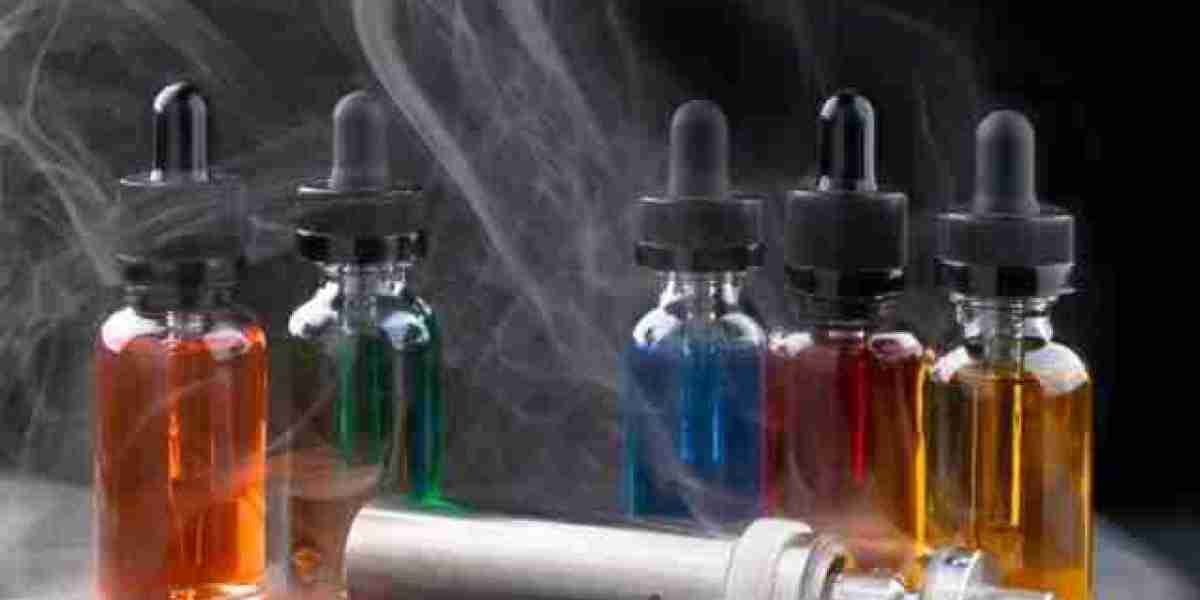What is the Harmful Chemical in Vape?
In the realm of vaping, one pertinent question that often arises is: What is the harmful chemical in vape? This query delves deep into the core of vaping safety, prompting users to critically analyze the substances they inhale. Among the plethora of compounds present in e-cigarettes, diacetyl stands out as a notorious adversary to respiratory health. Diacetyl, a flavoring chemical, has been associated with a condition known as "popcorn lung," characterized by severe and irreversible lung damage. Despite efforts to regulate its usage, diacetyl continues to pose a significant threat to vapers' well-being.
The Truth Behind Diacetyl and its Risks
Diacetyl, primarily utilized for its buttery flavor profile, pervades the vaping landscape, lurking within an array of e-liquids. Its inhalation, however, is not without consequence. Studies have linked diacetyl exposure to bronchiolitis obliterans, a debilitating lung disease prevalent among workers in microwave popcorn factories. Despite its ban in certain consumable products, the presence of diacetyl in vape juices raises alarming concerns regarding consumer safety. Vapers are urged to scrutinize product labels meticulously and opt for diacetyl-free alternatives to safeguard their respiratory health.
Understanding the Impact of Formaldehyde in Vaping
Another chemical of concern in the realm of vaping is formaldehyde, a compound notorious for its association with embalming procedures. When e-liquids containing propylene glycol are subjected to high temperatures, formaldehyde is produced through a process known as thermal degradation. This phenomenon underscores the importance of temperature control in vaping devices, as excessively high heat settings can catalyze the formation of harmful byproducts. Vapers are advised to exercise caution and adhere to recommended temperature ranges to mitigate the risk of formaldehyde exposure.
The Dangers of Acrolein in Vape Aerosols
Acrolein, a highly reactive aldehyde, constitutes another perilous constituent of vape aerosols. Formed through the thermal decomposition of glycerol, acrolein exerts cytotoxic effects on pulmonary tissues, exacerbating respiratory inflammation and oxidative stress. Prolonged exposure to acrolein-laden vapors may precipitate the onset of chronic respiratory ailments, underscoring the imperative of informed vaping practices. By familiarizing themselves with the potential hazards associated with acrolein exposure, vapers can make informed decisions regarding their vaping habits and product selection.
What are the 4 Main Chemicals Found in Vapes?
As consumers navigate the vast expanse of the vaping industry, they inevitably encounter an array of chemicals comprising e-liquids. Understanding the composition of these formulations is pivotal in discerning the potential health implications associated with vaping. Among the myriad components, propylene glycol, vegetable glycerin, nicotine, and flavoring agents emerge as primary constituents, each exerting distinct influences on the vaping experience.
Propylene Glycol: Friend or Foe?
Propylene glycol, a synthetic compound renowned for its humectant properties, serves as a ubiquitous component in e-liquids. prized for its ability to facilitate vapor production and throat hit sensation, propylene glycol is revered by vapers seeking a robust and flavorful vaping experience. Despite its widespread usage, however, propylene glycol has elicited concerns regarding its potential respiratory irritant properties. Individuals with sensitivities or allergies are advised to exercise caution and explore alternative formulations devoid of propylene glycol.
Delving into Vegetable Glycerin: Is it Safe?
Vegetable glycerin, a natural derivative of vegetable oils, occupies a prominent role in e-liquid formulations, imparting viscosity and sweetness to vape juices. prized for its mild and smooth vapor output, vegetable glycerin appeals to vapers discerning a gratifying vaping experience devoid of harshness. Despite its favorable attributes, vegetable glycerin may induce allergic reactions in susceptible individuals, necessitating vigilance during product selection. By prioritizing transparency and product integrity, vapers can mitigate the risk of adverse reactions and optimize their vaping journey.
Nicotine: The Addictive Component
Nicotine, a potent alkaloid intrinsic to tobacco plants, pervades the landscape of vaping, exerting profound psychoactive effects on users. prized for its ability to satiate cravings and induce pleasurable sensations, nicotine underpins the addictive allure of vaping devices. However, its addictive potential warrants prudent usage and conscientious monitoring to avert the onset of nicotine dependence. Vapers are encouraged to exercise moderation and explore nicotine-free alternatives to mitigate the risk of addiction and foster a sustainable vaping lifestyle.
Flavoring Agents: Decoding the Unknown
Flavoring agents, comprising a diverse array of compounds, infuse e-liquids with an assortment of tantalizing flavors, ranging from fruity to confectionary profiles. While flavor diversity enhances the sensory experience of vaping, the safety of flavoring agents remains a subject of scrutiny. Certain flavoring compounds, such as diacetyl and acetyl propionyl, have been implicated in respiratory ailments, prompting regulatory intervention and industry reformulation efforts. Vapers are advised to prioritize products bearing transparent ingredient labels and opt for formulations devoid of potentially harmful additives to safeguard their well-being.
What are 5 Dangers of Vaping?
While vaping has gained popularity as a purportedly safer alternative to smoking, it is not without its risks. Understanding the potential dangers associated with vaping is crucial for informed decision-making and risk mitigation. Here, we explore five prominent hazards of vaping that every enthusiast should be aware of.
Respiratory Risks: Unveiling the Impact on Lung Health
Numerous studies have highlighted the adverse effects of vaping on respiratory health. Inhalation of vaporized chemicals can irritate the airways, leading to inflammation and respiratory distress. Long-term exposure to vaping aerosols has been associated with an increased risk of respiratory infections, exacerbation of pre-existing conditions such as asthma, and even irreversible lung damage.
Cardiovascular Concerns: Examining the Effects on Heart Health
Emerging research suggests that vaping may have deleterious effects on cardiovascular function. Nicotine, a common component of e-cigarettes, can elevate heart rate and blood pressure, placing undue strain on the cardiovascular system. Additionally, exposure to certain chemicals present in vape aerosols may contribute to the development of cardiovascular disease, including atherosclerosis and myocardial infarction.
Chemical Exposure: Assessing the Risks Beyond Nicotine
While nicotine often garners the spotlight, it is essential to recognize that vaping exposes users to a myriad of potentially harmful chemicals. These include volatile organic compounds, heavy metals, and carcinogens, many of which have been linked to adverse health outcomes. Prolonged inhalation of these substances may increase the risk of respiratory and cardiovascular ailments, as well as systemic toxicity.
Addiction and Withdrawal: Understanding the Psychological Impact
Despite claims of being a smoking cessation aid, vaping carries a significant risk of nicotine addiction. The potent psychoactive properties of nicotine can lead to dependence, making it challenging for individuals to quit vaping or transition to less harmful alternatives. Moreover, abrupt cessation of vaping can precipitate nicotine withdrawal symptoms, including irritability, anxiety, and intense cravings, further perpetuating the cycle of addiction.
Public Health Concerns: Exploring the Societal Ramifications
The rise of vaping among adolescents and young adults has raised concerns about its long-term public health impact. The allure of appealing flavors, sleek designs, and discreet usage has made vaping particularly appealing to youth, leading to a surge in vaping prevalence among this demographic. This trend has prompted regulatory scrutiny and calls for stricter measures to curb youth access to vaping products and mitigate the potential for a new generation of nicotine-dependent individuals.
Is Vape More Harmful than Smoking?
The comparison between vaping and smoking is a contentious issue that has sparked debate among health professionals, policymakers, and the general public. While vaping is often touted as a safer alternative to traditional combustible tobacco products, its long-term health effects remain the subject of ongoing research and scrutiny.
Comparing the Risks: Vape vs. Traditional Cigarettes
Proponents of vaping argue that e-cigarettes eliminate many of the harmful chemicals present in tobacco smoke, thereby reducing the risk of certain smoking-related diseases. However, critics point out that vaping still poses health risks, particularly concerning respiratory and cardiovascular health. Additionally, the lack of long-term studies on the safety of vaping raises questions about its potential long-term consequences.
Long-term Health Effects: Debunking the Myths
One of the challenges in assessing the long-term health effects of vaping lies in the relatively recent emergence of e-cigarettes. Unlike traditional cigarettes, which have been extensively studied for decades, the health impact of vaping remains a topic of ongoing investigation. While some studies suggest that vaping may be less harmful than smoking, the full extent of its health effects, particularly over extended periods, is not yet fully understood.
Youth Vaping Epidemic: Addressing the Growing Concerns
Perhaps one of the most pressing issues surrounding vaping is its popularity among youth. The widespread availability of flavored e-cigarettes, coupled with aggressive marketing tactics targeting young people, has contributed to a concerning rise in youth vaping rates. This trend has raised alarms among public health officials, who fear that widespread youth vaping could reverse decades of progress in tobacco control and lead to a new generation of nicotine addicts.
Harm Reduction Strategies: Finding the Middle Ground
In navigating the complex landscape of vaping, policymakers and public health advocates are faced with the challenge of balancing harm reduction with prevention efforts. While vaping may offer a less harmful alternative to smoking for adult smokers looking to quit, stringent regulations are needed to prevent youth initiation and minimize potential health risks. Education, regulation, and access to evidence-based cessation services are essential components of a comprehensive approach to addressing the vaping phenomenon.
At AMEVAPE, we are committed to promoting responsible vaping practices and offering high-quality vaping products that prioritize consumer safety. As a leading disposable vape factory and supplier of pod mod systems, bulk vape juice, and CBD vaporizers, we strive to uphold the highest standards of product quality and transparency. With a focus on innovation and customer satisfaction, we aim to provide vapers with a diverse range of options to suit their preferences and needs.













